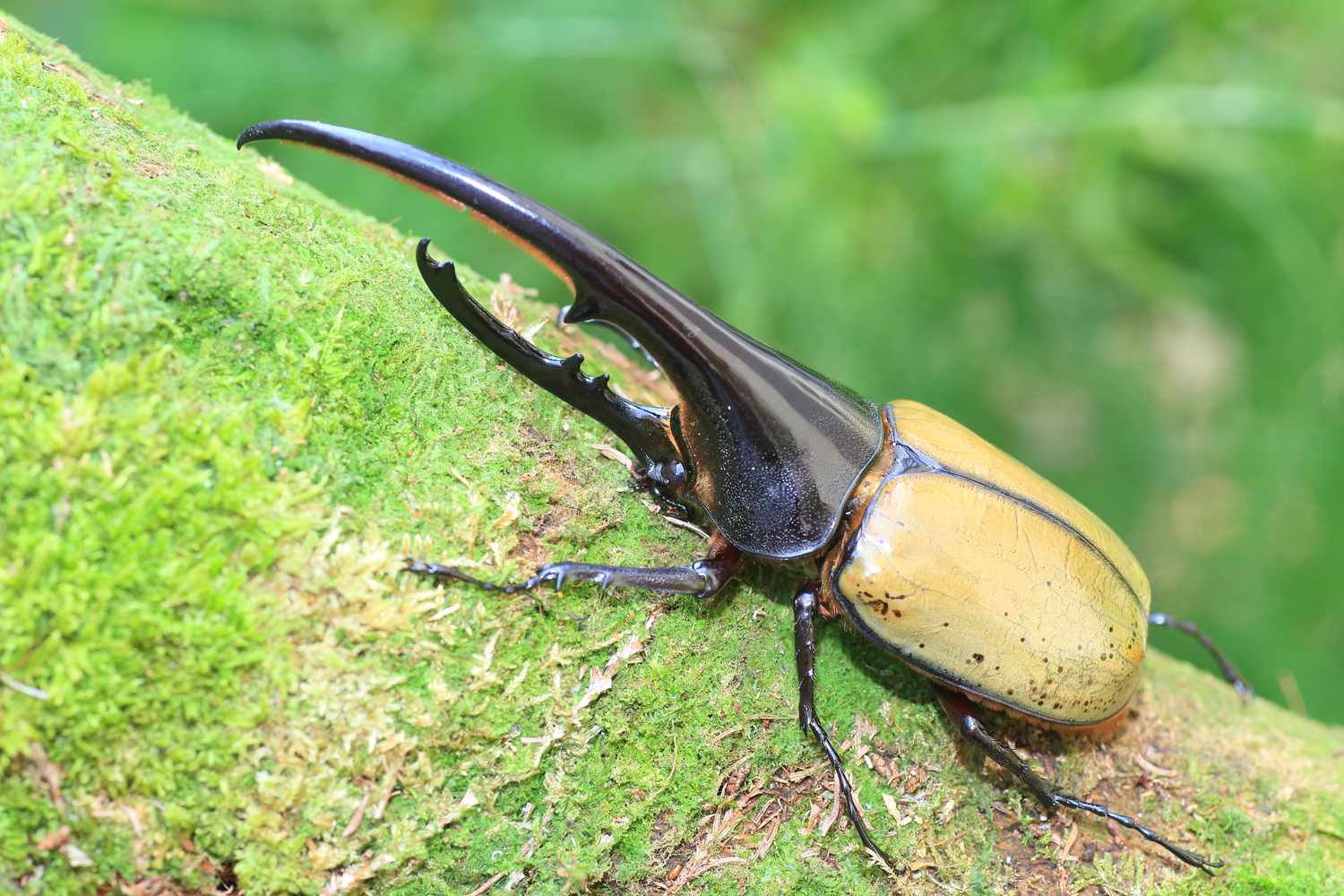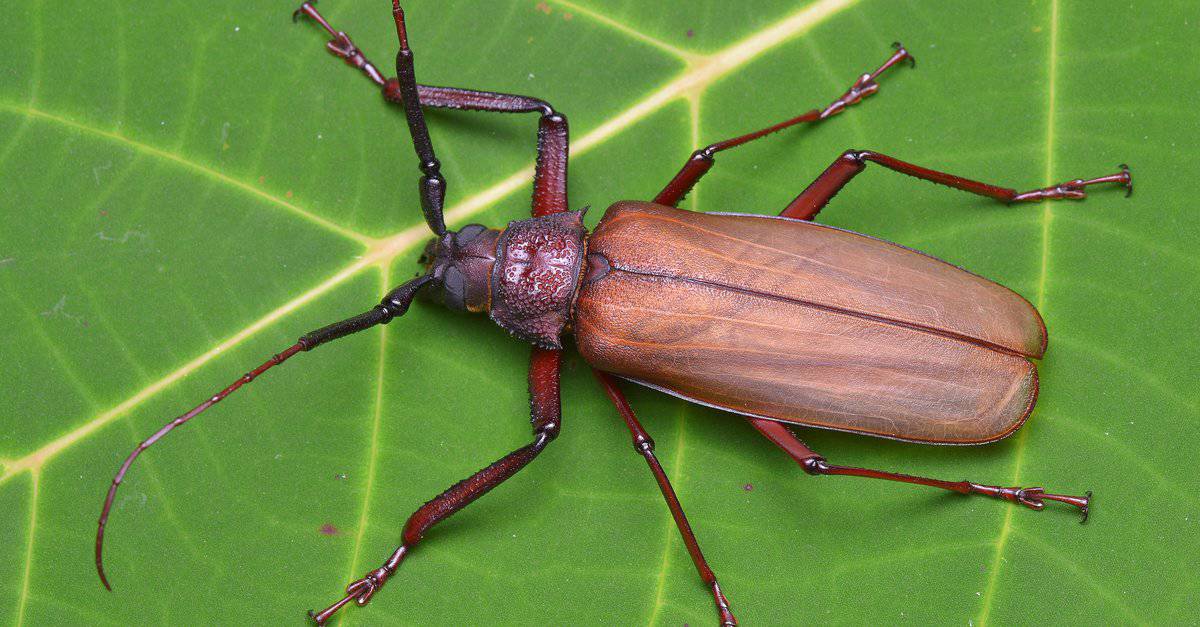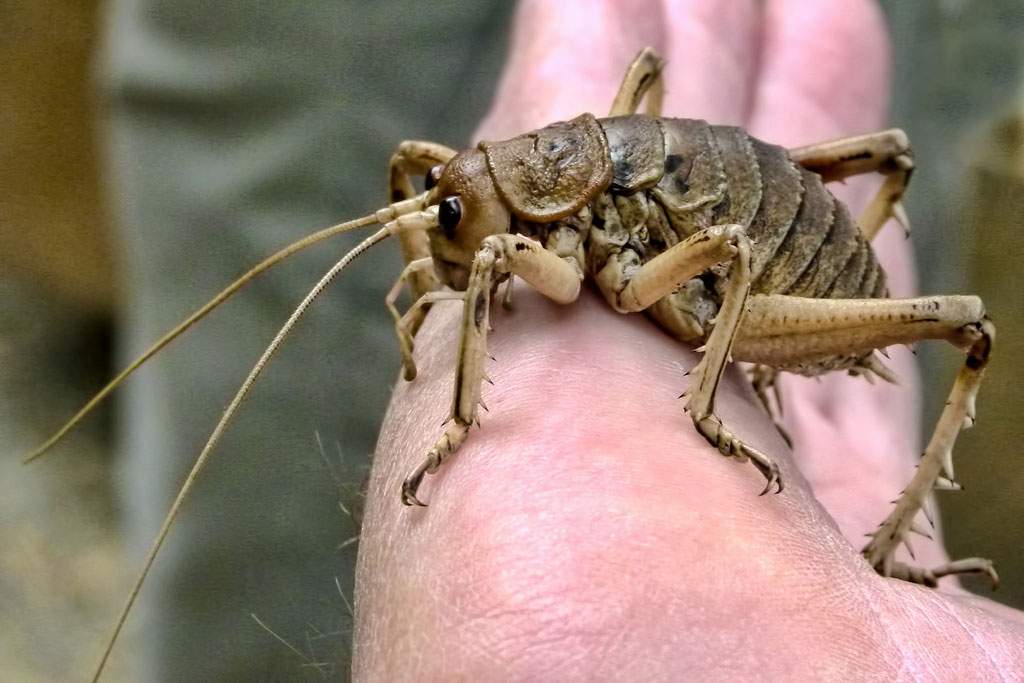Insects come in all shapes and sizes, from tiny ants to massive beetles. Some of the largest insects in the world are truly impressive, with wingspans that can reach over a foot and bodies that weigh several ounces.
In this article, we will explore the top 10 largest insects in the world, according to various sources. We will also discuss the different ways that insects can be measured, such as by weight, length, and wingspan. Whether you’re an insect enthusiast or just curious about the natural world, this list is sure to amaze and inspire you.
You are reading: The Top 10 Largest Insects In The World

The Top 10 Largest Insects In The World
Titan beetle

The Titan beetle (Titanus giganteus) is a Neotropical longhorn beetle and the largest known beetle in the world. They are found in South America, particularly in tropical rainforests where they hatch, grow, and live.
Titan beetles can grow up to 6.5 inches long, making them one of the largest insects in the world. They have brown skin and sharp spines on their legs to scare off predators. Titan beetles are herbivores and feed on decaying wood pulp. Their jaws are strong enough to bite through a wooden pencil and cut into human flesh.
The larvae of Titan beetles have never been found, but they are thought to feed on wood and grow up to 30 cm in length. The biggest threat to Titan beetles is the loss of their habitat.
Stick insects (Phobaeticus kirbyi, Phobaeticus serratipes, Ctenomorpha gargantua)

There are several species of stick insects that are among the largest insects in the world. Here are some of the most notable ones:
- Phobaeticus kirbyi: This species of stick insect is native to Borneo and is one of the longest insects in the world. The holotype deposited at the Natural History Museum in London measures 328 mm (12.9 in) excluding legs and 546 mm (21.5 in) including legs. Recent specimens of P. kirbyi have only reached 283 mm (11.1 in) in body length.
- Phobaeticus serratipes: This is another species of stick insect found in Southeast Asia. It is considered the second-longest known phasmid in terms of overall length, with a female collected in Malaysia measuring 567 mm (22.3 in).
- Ctenomorpha gargantua: This is the longest stick insect species in Australia and the second-largest in the world. It can grow up to 56 cm (22 in) in length.
- Giant walking stick: This is one of the longest walking sticks in the world. The adult female can span over 15 inches with outstretched forelegs.
Stick insects are known for their ability to camouflage themselves as twigs or branches, making them difficult to spot in their natural habitats. They are herbivores and feed on leaves and other plant matter. Stick insects are also popular as pets due to their unique appearance and low-maintenance care requirements.
Giant wētās

Giant wētā are a group of several species of wētā in the genus Deinacrida of the family Anostostomatidae, which are endemic to New Zealand. These insects are large by insect standards and are among the largest and heaviest in the world.
Most species of giant wētā are larger than other wētā, with some species reaching up to 10 cm (4 in) in length, not inclusive of legs and antennae, and weighing about 20-30 g. The largest species of giant wētā is the Little Barrier Island giant wētā, also known as the wētāpunga, which can weigh up to 70 g (2.47 oz).
Giant wētā are mainly herbivorous and feed on forest plants and foliage. They are also known for their ability to cope with variations in temperature and can be found in a variety of environments, including alpine, forests, grasslands, caves, shrub lands, and urban gardens.
Despite their intimidating appearance, giant wētā are docile and can be handled easily.
Goliath beetles
Goliath beetles are a group of large and bulky beetles found throughout Africa in tropical rainforests. They are among the largest insects in the world in terms of size, bulk, and weight.
Read more : 8 Types Of Ducks
There are six species of Goliath beetles, with several different subspecies and forms only partially described. The largest species is Goliathus regius, also known as the Royal goliath beetle, with the adult beetle measuring up to 4.5 inches in length.
The bulky bodies of Goliath beetles are composed of a thick chitinous exoskeleton, which protects their organs. They have large, powerful bodies with three sets of legs that end in claws, and their flying wings are tucked underneath a harder, reinforced set of wings that act as a protective barrier.
Males have “horns” on their heads that they use for battling other males. Goliath beetles feed primarily on tree sap and fruit and can be found on the forest floor in search of fallen fruits and plant sap.
Despite their large size, they are capable fliers.
Atlas moths
The Atlas moth (Attacus atlas) is a large saturniid moth that is native to the forests of Asia. It is one of the largest lepidopterans in the world, with a wingspan measuring up to 24 cm (9.4 in) and a wing surface area of about 160 cm2 (≈25 in2).
The Atlas moth is only surpassed in wingspan by the white witch (Thysania agrippina) and Attacus caesar, and in wing surface area by the Hercules moth (Coscinocera hercules). Females are noticeably larger and heavier than males, while males have broader antennae. The Atlas moth has a very short, vestigial proboscis, and they do not eat once they have emerged from the cocoon, relying on fat storage for energy.
Every flight takes valuable energy and can take days off their already short lives, as they have a very short life span of only one to two weeks. Adult Atlas moths are weak, unsteady fliers and rest during the day to conserve energy, flying at night when they are more active. The Atlas moth is found in tropical and forest habitats, and it is widely distributed in Southeast Asia, including in Nepal, northeastern India, Bangladesh, Bhutan, southeastern China, Laos, and Vietnam.
Tarantula hawks
Tarantula hawks are a group of wasps belonging to the family Pompilidae, and they are known for their ability to hunt tarantulas. They are found in the Americas, with some species occurring in both the Old and New Worlds. Tarantula hawks are one of the largest parasitoid wasps, and they use their stingers to paralyze their prey before dragging it to a brood nest as living food.
A single egg is laid on the prey, hatching to a larva which eats the still-living host. Adult tarantula hawks are nectarivorous and feed on the flowers of milkweeds, western soapberry trees, or mesquite trees. They are found on all continents other than Antarctica. Tarantula hawks are large wasps, with some species growing up to 2 inches in length. They have dark blue, iridescent bodies, bright orange wings, and long legs.
While adult tarantula hawks are nectavores and feed on flowers, they get their name because adult females hunt tarantulas as food for their larvae. An adult female will paralyze a tarantula with its stinger and then transport the spider back to the hawk’s nest, where the female lays an egg in the spider’s abdomen and covers it.
Mydas flies
Mydas flies are a family of flies known as Mydidae, which are found worldwide. They are generally large in size, with about 471 species described.
The largest known fly, Gauromydas heros, belongs to this family. Mydas flies are often mistaken for wasps due to their size and appearance, but they are harmless. They have clubbed antennae, which is a unique feature among flies. Mydas flies are predators of soil-dwelling insects, including grubs, and they are known to prey on the grubs of beetles. As adults, they feed on nectar and pollen from flowers, which may assist in pollination.
Mydas flies are found in a variety of habitats, including arid and semiarid regions of the world, forests, and soil and rotting wood habitats. They are often difficult to photograph because they fly away when approached.
Hercules beetles
Hercules beetles are a species of rhinoceros beetle native to the rainforests of southern Mexico, Central America, South America, and the Lesser Antilles. They are among the largest beetles in the world, with males reaching up to 180 mm in length. Females are dark in color and do not have horns.
The Hercules beetle is known for its tremendous strength and is named after Hercules, a hero of classical mythology who is famed for his great strength. The larvae of the Hercules beetle are saproxylophagous, meaning that they feed on rotting wood, residing in the same during their two-year developmental stage.
The adult Hercules beetle feeds on fresh and rotting fruit, along with tree sap. Hercules beetles are harmless to humans and can be found in deciduous forests and around lights at night. There is some concern that Hercules beetles will soon be declining, as decaying ash trees are some of their favorite rotting trees to use as larval nurseries.
Queen Alexandra’s birdwing butterfly
Read more : 3 Extinct Types Of Wolves
Queen Alexandra’s birdwing (Ornithoptera alexandrae) is the largest species of butterfly in the world, with females reaching wingspans slightly in excess of 25 cm to 28 cm. This butterfly is restricted to the forests of the Oro Province in eastern Papua New Guinea. The species is endangered and one of only three insects to be listed on Appendix I of CITES, making commercial international trade illegal.
The female Queen Alexandra’s birdwings are larger than males with markedly rounder, broader wings. The butterfly is named after Queen Alexandra, the wife of Edward VII and mother of George V.
The males of the species have iridescent blue-green hues in both the primary and secondary wings, while the females display a brown coloration with white marks patterned in a pair of rows of chevrons in their primary wings, and the hindwings are also brown, but having submarginal lines of centered triangles in dull white to yellow.
Palos Verdes blue butterfly
The Palos Verdes blue butterfly (Glaucopsyche lygdamus palosverdesensis) is a small, blue butterfly native to the Palos Verdes Peninsula in southwest Los Angeles County, California, United States. It is considered one of the rarest butterflies in the world, with a distribution limited to one single site.
The butterfly was discovered in the early 1970s and was listed under the US Endangered Species Act in 1980. The Palos Verdes blue butterfly has a wingspan of 2.5 to 3 cm and males have a silvery-blue coloration. Females are gray with several round spots. The butterfly is a member of the family Lycaenidae and has a one-inch wingspan.
The Palos Verdes blue butterfly is a subspecies of the silvery blue (G. lygdamus) and is distinguished from other subspecies by its slightly different patterning on the underside of the wing and an earlier flight period. The butterfly is endangered due to habitat loss, urbanization, and invasive species.
In recent years, conservation efforts have been made to save the Palos Verdes blue butterfly, including captive breeding and reintroduction programs.
FAQS
1. What is the largest insect in the world?
The largest insect in the world is the Giant wētā, a large flightless cricket that can weigh nearly 3 ounces and measure up to 4 inches long.
2. What is the largest beetle in the world?
The largest beetle in the world is the Titan beetle, which can grow up to 6.5 inches long
3. What is the largest butterfly in the world?
The largest butterfly in the world is the Queen Alexandra’s birdwing butterfly, with females reaching wingspans slightly in excess of 25 cm to 28 cm.
4. What is the largest moth in the world?
The largest moth in the world is the Atlas moth, with a wingspan measuring up to 24 cm (9.4 in) and a wing surface area of about 160 cm2 (≈25 in2).
5. What is the largest grasshopper in the world?
The largest grasshopper in the world is the Tropidacris grasshopper, which can reach up to 12–15 cm (4.7–5.9 in) in length and 23–27.5 cm (9.1–10.8 in) in wingspan.
6. What is the largest stick insect in the world?
The largest stick insect in the world is the Phobaeticus kirbyi, which can grow up to 328 mm (12.9 in) excluding legs and 546 mm (21.5 in) including legs.
7. What is the largest wasp in the world?
The largest wasp in the world is the Asian giant hornet, which can grow up to 5 cm (2 in) in length.
8. What is the largest fly in the world?
The largest fly in the world is the Gauromydas heros, which belongs to the Mydidae family and can grow up to 7 cm (2.8 in) in length.
9. What is the largest grasshopper in the world?
The largest grasshopper in the world is the Tropidacris grasshopper, which can reach up to 12–15 cm (4.7–5.9 in) in length and 23–27.5 cm (9.1–10.8 in) in wingspan.
10. Are any of the largest insects in the world endangered?
Yes, several of the largest insects in the world are endangered, including the Queen Alexandra’s birdwing butterfly, the Palos Verdes blue butterfly, and some species of giant wētā.
Source: https://petstutorial.com
Category: Animals










